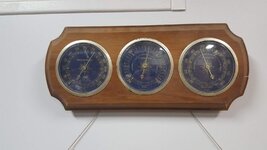Bronze Supporter
- Messages
- 19,805
- Reactions
- 55,304
Well howdy to the reloading community and great wealth of knowledge.
I started reloading earlier this year and have gained much knowledgeable experience prepping close to 800 cases for my AR.
My next project is reloading for my handgun in 40 Smith & Wesson.
I've looked at the information and specifications for this case, which through the saami PDF states that the head space dimensions of the case should be between .850-.010.
Now these numbers don't jibe with the actual size of once fired cases from my XDM40'S which are .832-.836 before resizing. After resized the test cases read from .838-.844.
I am cornfused at the difference of actual numbers & the minimum of saami specks, did I miss something there?...... need a little help here.
As always, any help is surely appreciated.
I started reloading earlier this year and have gained much knowledgeable experience prepping close to 800 cases for my AR.
My next project is reloading for my handgun in 40 Smith & Wesson.
I've looked at the information and specifications for this case, which through the saami PDF states that the head space dimensions of the case should be between .850-.010.
Now these numbers don't jibe with the actual size of once fired cases from my XDM40'S which are .832-.836 before resizing. After resized the test cases read from .838-.844.
I am cornfused at the difference of actual numbers & the minimum of saami specks, did I miss something there?...... need a little help here.
As always, any help is surely appreciated.












